50 The View From Here
Posted by Christine on Jun 1, 2015 in Ireland | 2 comments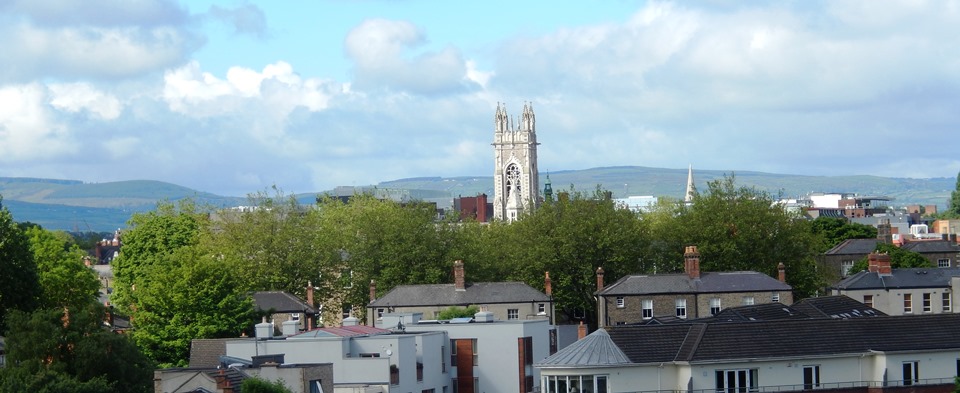
June
In June 2014 Ron and I came to Dublin for a week to find an apartment for our sabbatical year. Traipsing around the city we barely knew at the time, we saw several nice places where we could imagine ourselves setting up house, but when we visited 78 The Dickens at The Gasworks and took in this spectacular view from the living room along with the apartment’s other positive features (extra bedrooms, two bathrooms, lots of windows, and easy access to nearby shops, restaurants, and public transportation), we were hooked. Shortly after we moved in on June 29, I rearranged the furniture somewhat awkwardly so that as I sat at my desk each day, I could look out on the DART tracks; the rooftops, chimneys, steeples, and cranes of Dublin 4; the Dublin Mountains in the distance; and the weather that generally moves towards the apartment from the southwest—the view from here. Over the course of the year, I’ve gazed at this live painting with its subtle but telling changes for hours every day and tried to capture it in photography many times. This is my Dublin.
July
We arrived on June 29, and by July 3 had a coffee maker, a daunting load of items from IKEA (some assembly required), a strange assortment of groceries, and the beginnings of a tentatively sketched out work routine. By all accounts, it was one of the most beautiful Julys in recent memory, with many days gloriously sunny and warm–that means in the 60’s–like the day in the photo, the view from here. It’s a good thing our son Nick came to visit us a week after we arrived in Dublin, or we might have spent the whole month organizing the apartment and hunting down essentials like a set of wooden tongs for the toaster (found at Tiger), a big garbage bin for the recycling (Argos), or lots of hangers since there are so few drawers in the apartment (Dunnes Stores). We didn’t really need any of the things that much, but part of the fun of moving to a new place is solving these mundane puzzles and getting to know the city through the medium of your daily life. Conquering complicated new rules no one understood to get a bank account, setting up gas and electricity, getting the Internet and cable going, finding the food and household items we wanted at local shops, mastering the streets, buses, and ways of this city—all of this was strangely rejuvenating. Apparently you can teach an old dog new tricks.
Shortly after our arrival, we noticed a family of swans living in the Grand Canal Dock, an artificial harbor that is the heart of our area and is just steps from The Dickens. The three cygnets were definitely ugly ducklings when we met them, sticking close to their parents on the still waters of the dock. We saw them almost every day and watched them grow throughout our Dublin stay, their mottled gray feathers turning whiter and whiter as the year wore on.
August
If I could buy a house here, it would be that yellow one with the red door, always a bright spot in my photos, even at dusk, which in August comes at about 8:30 p.m. Given the size and location of the house and Dublin prices, which increased by twenty-five percent this year, I bet it would go for 2 million Euro or more. It’s a bold color for the neighborhood, breaking the monotony of “brick upon grey brick.” One day I lurked by the wall surrounding the house, snapping pictures through the gate of its facade and lovely terraced garden. There’s something about yellow houses—every neighborhood needs at least one.
Though you can’t see it in this view from here, the commuter rail DART train goes right by our building between us and the yellow house. We love living in a city with excellent and convenient public transportation, so rare in the US. We purchased “Leap” or commuter cards right away and watched other people to figure out exactly how to use them on the buses, trams, and trains.
When we first moved in, the noise of the DART trains clattering by every few minutes from six in the morning to midnight and right next door drove us crazy, especially because in the summer we had to leave the windows open to keep the apartment cool. After about a month, we stopped noticing the trains, except when visitors reacted to the noise, or when the trains were on strike in late August and the deafening silence opened up like a void.
September
The entrance to the roof terrace is level with our apartment, so we frequently go out there to check out the other views from here. This photo encompasses the two most important historical landmarks in our part of town, the Gasometer on the left, and the Poolbeg Electrical Power Station in the distance. Poolbeg is like the Mona Lisa, but instead of eyes that follow you around the room, the tall red and white chimneys follow you up and down the coast. They look like they are close to you no matter where you are within about ten miles north or south of the power station. The station is no longer functional, but the chimneys are now a protected landmark, and I’ve learned to love them and to think of them as symbols of home, as many Dubliners do.
By September we had established a rhythm to our life in Dublin, which included zigzagging all over this end of town to various shops for groceries, meat, fish, produce, and cheese. There are six butchers within walking distance, and half of them also sell fish; we learned the delivery schedule so we could get tuna on the day it came in, mussels for the weekend, cod at its freshest. After some experimentation, I discovered that by far the best avocados are sold by the convenience store closest to us, Mellon’s, where I buy nothing else except milk and newspapers. We get our cheese at Sheridan’s or Fallon & Byrne in the city centre, sticking mostly to Irish varieties for the time being, and the latter also has gorgeous big heads of garlic, all sorts of fresh herbs and greens, more varieties of tomatoes than I’ve ever seen in stores, and brown lentils, which we couldn’t find anywhere else. Michael Byrne’s butcher shop in Sandymount and F&B have the best fish. Eurospar has the best olive oil—it is both tasty and cheap, and we consume a lot of it. Il Valentino’s cookies, cakes, brownies, and other delights outdo the other Dublin bakeries I know, and their bakery-cafe is only two blocks away, though in Ireland you say two “streets.” I sometimes take my book there and sit on their front patio overlooking the Grand Canal Dock, sipping a soup-bowl-sized cappuccino and keeping an eye on the swan family in the afternoon sun.
October
From our bedroom window the view from here also includes the Gasometer—where Victorian Dublin stored its natural gas—and the rows upon rows of “two up, two down” houses built for dockworkers around 1900. Today, these tiny but self-contained cottages with postage stamp gardens in back go for €300,000 to €500,000, depending on how much they’ve been renovated. The houses were modeled on the neat brick row houses of industrial Belfast. During the Troubles in Northern Ireland (1969-1998), this area of Dublin was used as a shooting location for films set in Belfast like In the Name of the Father and The Boxer. It would have been dangerous and incendiary to shoot scenes of violence—even fake violence—in either Belfast or Derry at the time.
Both summer and fall were remarkably dry and sunny months. Records were broken in Dublin and across the country. So this day of rain and fog brought a new, darker mood to the neighborhood. It was a day to sit inside and look out on the rain with a big mug of tea in hand and the heat on for the first time. Since we are near the sea and the corridor of the River Liffey, we feel the force of the weather as it moves from west to east. Though the apartment is solidly built, when the winds howl through the city as they often do, the windows rattle and unidentified things outside go bang in the night. I lie awake in bed, dreading and loving the racket.
November
A quick trip home at the beginning of this month showed us just how much we had adapted to the sabbatical pace and how blissfully distant from the daily concerns of work and house we had become. In Dublin we have only our research projects and the pleasure of learning about Ireland to worry about. We live in a small, new apartment that belongs to someone else where everything works or is the landlord’s responsibility to fix if it doesn’t, and we can clean it in less than an hour. For the first time in years and years, whatever I am doing is the only thing I’m doing. That’s a great feeling. But truth be told, I also miss the roller-coaster thrill of multitasking.
As the trees lose their leaves, we can see more and more of the city in our view from here. Before this year, I had never been in Ireland in November, and now it is my favorite month. As we approach the solstice, the days are “crashing” more dramatically—the difference is noticeable every day—and for the first time since we arrived in June, the streets are virtually empty of tourists.
Speaking of tourists, almost every day someone—a taxi driver, a shop clerk, a person sitting next to us in a pub—asks us if we are “enjoying our holiday.” No doubt our accents and probably our looks and manners give us away in about two seconds. When I respond to this question, I never take the easy route, which would be to say “yes,” smile, and move on. Explaining what I’m doing and why I’m doing it is complicated and adds up to much more than the questioner, who was merely being polite, expected. But my “year” in all its twelve month glory is important to me. I whip out my plastic residence card at every opportunity and am proud of my ability to give directions on the street to lost Irish people. I may not be Irish, but I am here for the long haul, in spirit and in reality.
December
In December the sun rises at about 8:35 a.m. and sets at around 4:00 p.m. Even at 3:00 p.m., the shadows start to close in, and the day seems to have already ended. If I’m not quick to snap a view from here before that, it’s too dark. I’ve spent more Decembers in Ireland than any other month, so I know how to jam pack the day with anything I want to do outdoors between those hours. Luckily, the shops remain open until 5:30 or 6, later on Thursdays, because I have a lot of Christmas shopping to do. Brilliant December marketing strategy: turn down the temperature and have the sun set really early but keep the shops warm and lit up with strings of bright lights.
Given various engagement with friends and visitors and the pending arrival of our kids, I had to get a Christmas tree in and decorated on a certain day, even though Ron was away in India for two weeks and Emma, who was already staying with us and still jet-lagged, had fallen asleep after lunch. I found a hardware store in Sandymount about a mile away that seemed to have trees and called to make sure they still had a few left. But how to get the tree home? I brought along our trusty, old-lady-style, blue and white polka dot shopping cart, hoping I could sort of drag the tree on its wheels. I picked the lightest tree I could, but even the thin scraggly ones are surprisingly heavy. The nice people at the hardware store helped me strap the tree to the cart—it took three of us since the tree was really much too big and far too heavy. They even lent me a couple of bungee cords for the job. By that time it had started to rain and since it was after 3 p.m., it was pretty dark. I must have looked very strange, a tall, whitehaired lady dragging a small cart with a large Christmas tree lashed to it through the rain. Several drivers kindly stopped to let me cross the street with my heavy load, and lots of people gave me encouraging smiles. I made it home in a sweat, put the tree in its stand, and collapsed into a chair. While I recovered, Emma put up the strings of lights and later helped me with the ornaments. As always, it was the most beautiful tree we ever had.
January
The snowflakes were falling softly, softly falling, smudging the view from here, but they didn’t stick.
After we put Christmas away, said goodbye to our kids, and sent off the horde of relatives and friends who visited us in December, Ron and I realized that we had come to the midway point in our sabbatical, and a certain sense of urgency set in. We had planned to take advantage of cheap airfares from Dublin to the continent and visit some other European cities—London, Rome, Stockholm, and Cologne to name only some of the possibilities—during our precious year, but by January we knew that concentrating on Ireland was what we wanted to do. In addition to our own ideas about where to go, friends and other sources had given us a long list of must-sees that included high crosses, birth- and burial-places of famous people, national parks, gardens and harbors, abbeys and stately homes, memorials to famous battles and ambushes, an archive of documents and ephemera from two hundred years of the independence struggle, a lighthouse that had played an important role in World War II, and a gravestone with a hurling stick carved into it. So I downloaded a blank calendar for January through June 2015, and we started to see what we could accomplish while still giving a decent amount of time to our sabbatical projects.
February
The Dublin Mountains appear and disappear in the view from here depending on the weather. Sometimes they are simply not there at all, while at other times they are so clear I imagine I can see sheep on the hillsides. Sometimes, they are nothing more than a faint backdrop of violet and gray watercolor layers. We had no snow—or not more than a handful of big wet flakes—in the city this year, so seeing it on the mountains was a welcome surprise on a few mornings in February and March.
My brother Mike, his wife Michele, and their two grown-up children Willow and Camille spent a week with us in February—they never mind getting out of Tucson, AZ during “Rodeo Week.” In addition to sightseeing in and around Dublin, we went on a short two-night trip down south through Wicklow to Kilkenny and Waterford. Our day at Powerscourt Estate in Wicklow—just the other side of the Dublin Mountains—was brilliantly sunny but bitter cold. Later that afternoon as we made our way to Kilkenny across the Wicklow Mountains via Sally Gap with its dramatic barren slopes and gorgeous lakes, it started to snow—sideways. We were the only car on the road, the only ones ignorant enough or foolish enough to take the chance. I think that hour’s drive through the sideways snow was the most spectacular aspect of the trip—it was certainly the most talked about.
March
March came in like a lamb and went out like a lion. It was the winter we never had during the actual winter months of December, January, and February, not terribly cold but rainy and overcast day after day—really the only extended “bad” weather to speak of since we came to Ireland last summer. I let this photograph of the view from here blur on purpose–that’s how these chilly, rainy March days feel in the city, blurry and uncertain.
April
A trip home to Atlanta in April marked the last quarter—or less—of our sabbatical in Ireland. April is the best month for remembering the good things about living in the South. I loved waking up to the early morning chorus of songbirds around our house in the city, and the riot of lush green and bright azaleas and fruit trees in bloom made home a welcoming place.
Back in Dublin, we awake to the cries of gulls and magpies, rooks and hooded crows, who make up a morning chorus that is more raucous but endearing in its own way. Seagulls swarm this city and can be found searching for food even far inland. There are frequent bursts of complaints about them in the newspapers and on the radio. We are on the seventh floor of the building and often have our big window open to the view from here—screens are unknown in Ireland. The gulls fly so close to the building, sometimes I think one is going to sail right into the apartment. With body lengths of over thirty inches for some species, gulls are bigger than they seem: the wingspan of a herring gull, one of the most common here, is over five feet. Occasionally, a wedge of swans flies silently overhead.
Down at the Grand Canal Dock, the three cygnets that were born shortly before we arrived last June are all grown up. We watched them change all year, turning from patchy gray ugly ducklings to graceful young adults with mostly white feathers. By the spring, instead of gliding around after their parents as they did when we were new to the area, they were off on their own exploring all the corners of the dock area. And then one day they disappeared. “Among what rushes will they build, / By what lake’s edge or pool / Delight men’s eyes, when I awake some day / To find they have flown away?” (from “The Wild Swans at Coole” by William Butler Yeats)
We expect to see their parents with a new brood any day now.
May
We are planning our last weeks—weeks not months—carefully now, and as much as I miss friends and family at home, and as certain I am of coming back (three trips planned in the next thirteen months–don’t pity me), I don’t want to leave Ireland.
The process of moving in, finding our way, and settling—so exciting, scary, and rejuvenating—is starting to reverse itself. We’re planning dinners and pub nights with Irish friends to make sure we see them one last time. At coffee after class at the gym, my exercise friends are already telling me they’ll miss me and urging me to visit when I’m back in Dublin. They have gotten together and planned to take me out to a farewell lunch this week. When a free afternoon pops up, Ron and I think about what Dublin or nearby site we really want to fit in before we go. A few weeks ago I sent my winter clothes to Atlanta in a suitcase with a friend who offered to help. This week I’m scheduling a date with the shipping company and making sure I know how to transfer utilities back to the landlord and shut down the cable and Internet. Though we don’t leave until June 30, we have lots of travel and visitors coming up, so I want to get all that out of the way. We are thinking about which of our Irish friends will inherit various household items and wondering if we can stuff a few favorites—a great baking pan and a handy cheese grater from IKEA, my kickboard and swim fins, the blue-and-white polka-dot shopping cart that would be very useful in Atlanta—into suitcases or send them with the books, pottery, and baskets the shippers will take. Even our grocery shopping has changed subtly. Knowing many of our meals for the last weeks will be out with friends or on the road, we don’t buy staples or big quantities any more, shopping just for the meals we have planned and trying to use up the items in the cupboard.
I took this bright, cheerful photo from the roof terrace, so this view from here is wider than in my other pictures, and you can see even better how the yellow house stands out. This may be the shot I print, frame, and put on my desk at work to remind me of happy times in Dublin.
June
You might think this version of the view from here is rather dark, but actually it is rather light, given that I took the photo at 9:35 p.m. on June 1. The longest day of the year is only three weeks away, and longest is longer in Ireland and points north than we are used to in the continental US.
The day and my year in Ireland are almost over, but the bright nights and early sunrises tell us that summer has just begun. Events using the word “summer” in the title are starting to happen across Ireland, and even though it’s been chilly, tank tops, flip-flops, and sun hats are cropping up all over town. In The Gasworks, I’m seeing more than the usual number of move-ins and move-outs with the characteristic hand trucks and bright blue and yellow IKEA bags. June must be a transition month for Google and the other local employers as it was for us, both last year and this.
Over on the Grand Canal Dock, the adult swans are nowhere to be seen. We think they are nearby, sequestered among the canal’s rushes awaiting or tending to this year’s brood. If all goes according to plan, we’ll catch a glimpse of them before we fly home to Atlanta on June 30. It would make leaving here a bit easier to know that the next generation is in place.

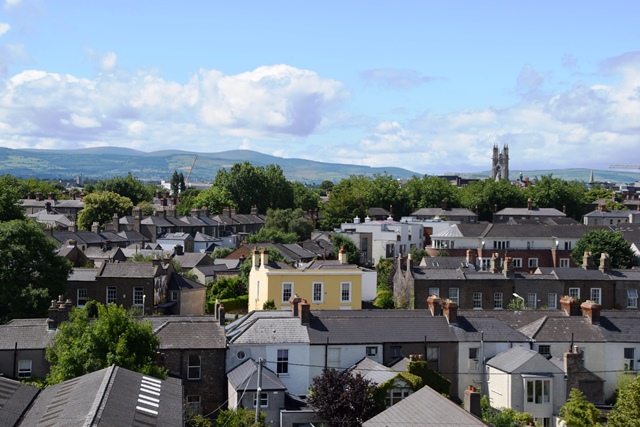
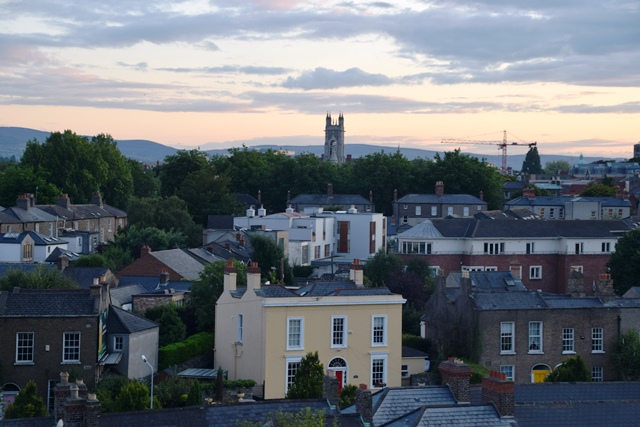
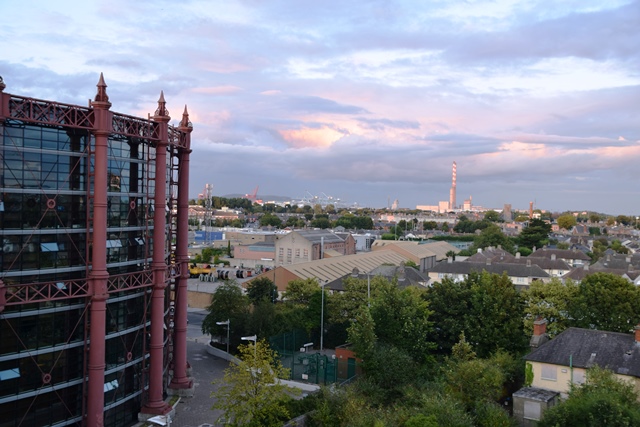
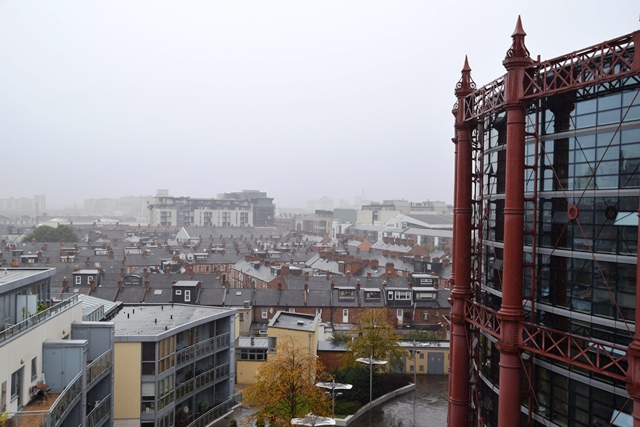
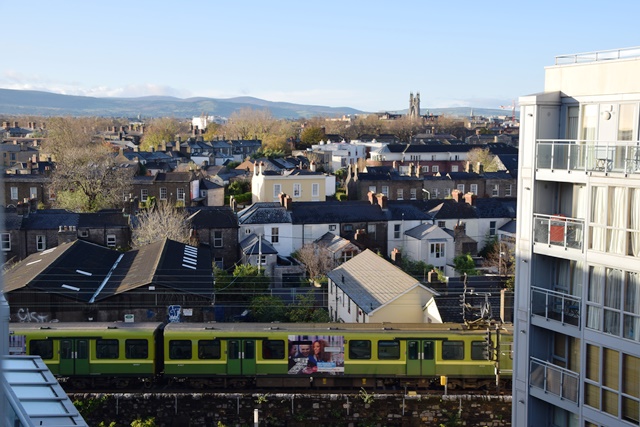
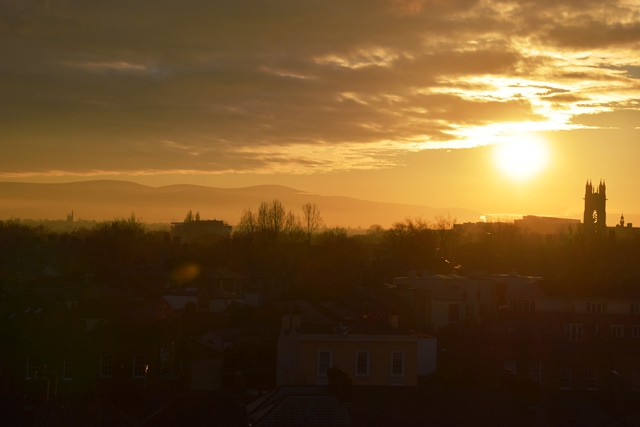
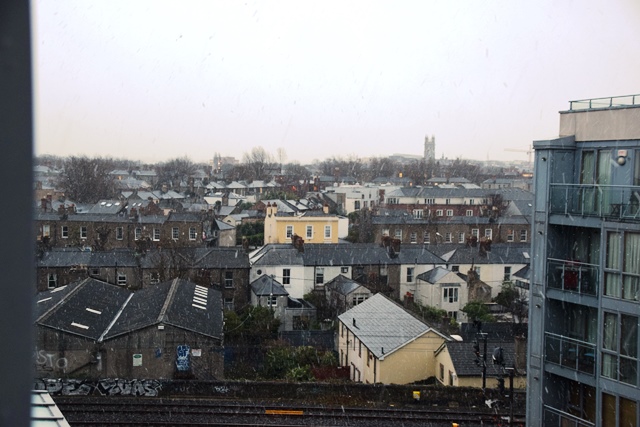

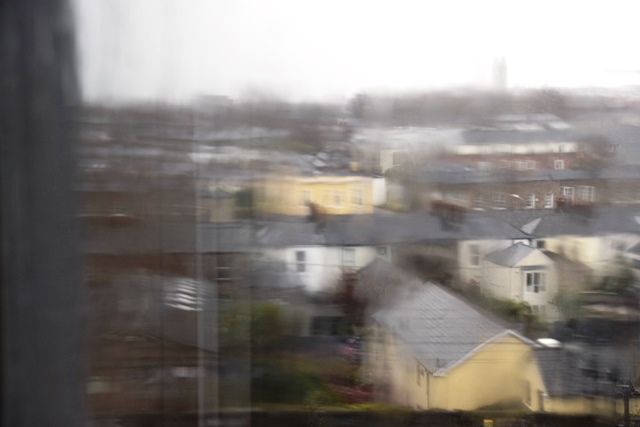
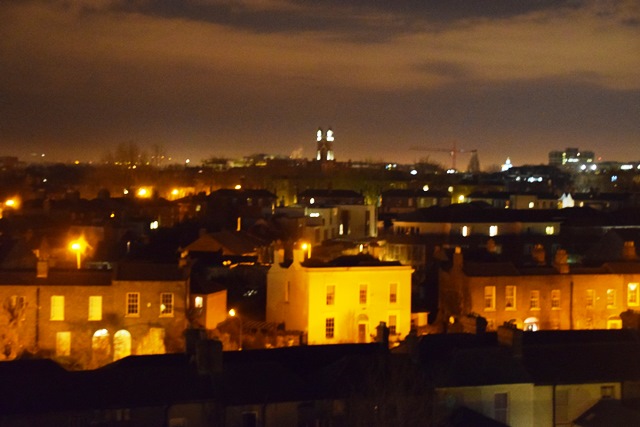
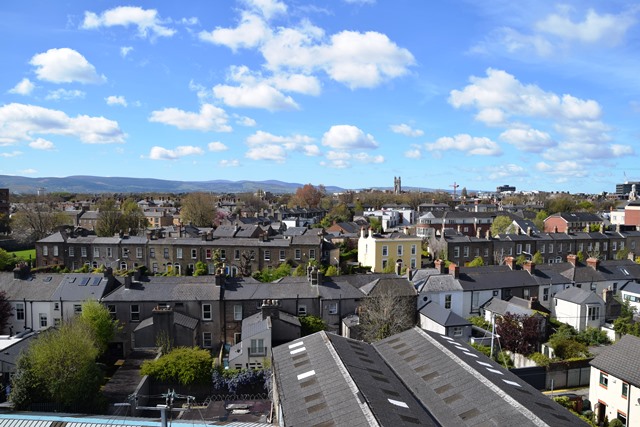
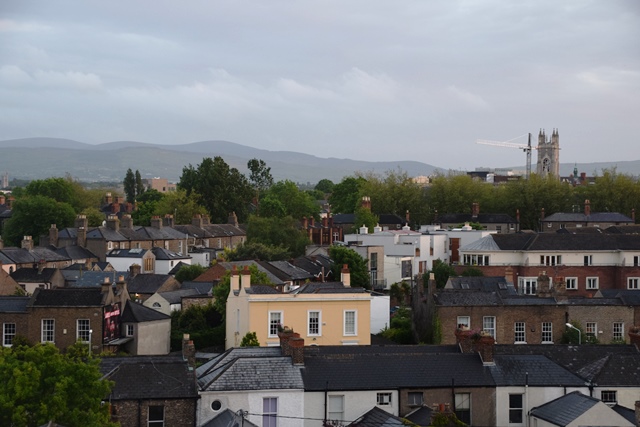
A wonderful read, and lovely to think of you there.
Very moving and very reminiscent of our brief time in 1991-2 in Birmingham, UK. Children did put a different outlook on our outings, but the substance of your writing reminded me of all the wonderful adventures and journeys we had during this time. Thanks for your blog. Love to you and Ron. See you in August. Safe and happy trails.